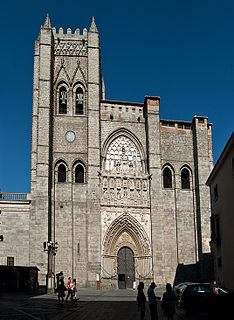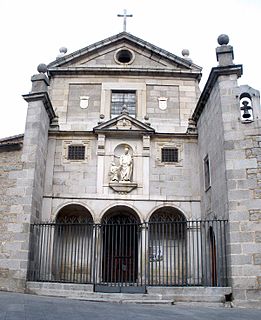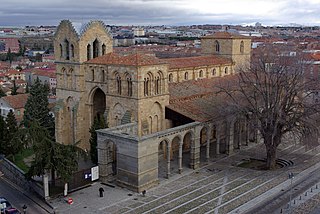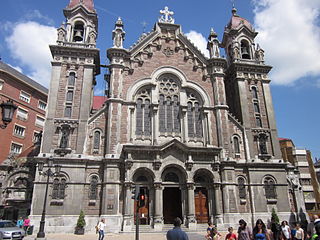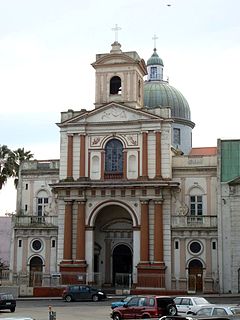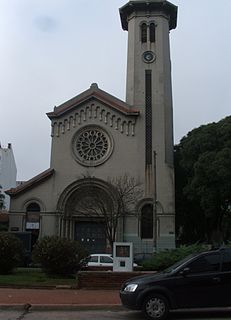| Iglesia de San Juan de Ávila | |
|---|---|
 | |
| Basic information | |
| Location | Alcalá de Henares, |
| Affiliation | Roman Catholic |
| Ecclesiastical or organizational status | Parish church |
| Architectural description | |
| Architect(s) | Eladio Dieste |
| Architectural type | Church |
The Church of Saint John of Ávila (Spanish : Iglesia de San Juan de Ávila) is a Roman Catholic parish church located in a modern neighbourhood of Alcalá de Henares, Spain.

Spanish or Castilian, is a Western Romance language that originated in the Castile region of Spain and today has hundreds of millions of native speakers in the Americas and Spain. It is a global language and the world's second-most spoken native language, after Mandarin Chinese.
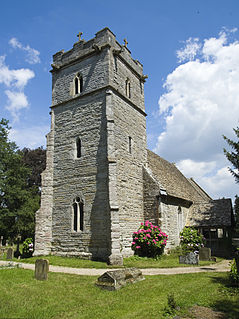
A parish church in Christianity is the church which acts as the religious centre of a parish. In many parts of the world, especially in rural areas, the parish church may play a significant role in community activities, often allowing its premises to be used for non-religious community events. The church building reflects this status, and there is considerable variety in the size and style of parish churches. Many villages in Europe have churches that date back to the Middle Ages, but all periods of architecture are represented.

Alcalá de Henares is a Spanish city located 35 kilometres northeast of the country's capital, Madrid. It stands out for its rich archaeology and was one of the first bishoprics founded in Spain. Locally, it is generally known simply as "Alcalá", but "de Henares" is appended when needed to differentiate it from a dozen Spanish cities sharing the name Alcalá. The Latin name, Complutum, is sometimes used. The city is the capital of its namesake region, Comarca de Alcalá. Its historical centre is one of UNESCO's World Heritage sites. Since his investiture after the 2015 local election the Mayor is Javier Rodríguez Palacios (PSOE).
The current temple was built in brickwork by Uruguayan engineer-architect Eladio Dieste; the dimensions of walls and roofs are very slim, thanks to reinforced ceramics. [1] [2]

Brickwork is masonry produced by a bricklayer, using bricks and mortar. Typically, rows of bricks—called courses— are laid on top of one another to build up a structure such as a brick wall.

Uruguay, officially the Oriental Republic of Uruguay, is a country in the southeastern region of South America. It borders Argentina to its west and Brazil to its north and east, with the Río de la Plata to the south and the Atlantic Ocean to the southeast. Uruguay is home to an estimated 3.44 million people, of whom 1.8 million live in the metropolitan area of its capital and largest city, Montevideo. With an area of approximately 176,000 square kilometres (68,000 sq mi), Uruguay is geographically the second-smallest nation in South America, after Suriname.

Eladio Dieste was a Uruguayan engineer and architect who made his reputation by building a range of structures from grain silos, factory sheds, markets and churches, most of them in Uruguay and all of exceptional elegance.
It is dedicated to saint John of Ávila. [3]
It is interesting to point out that, originally, this church was going to be built in Uruguay (Our Lady of Lourdes Church in Malvín); as the economic situation made this impossible, only the apse was built. [4]

Malvín is a barrio of Montevideo, Uruguay.



